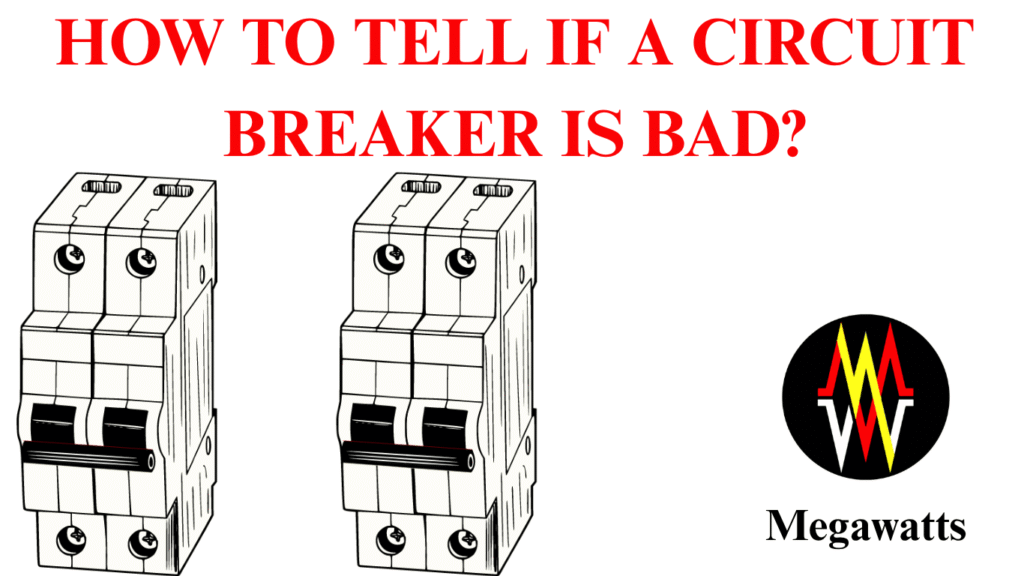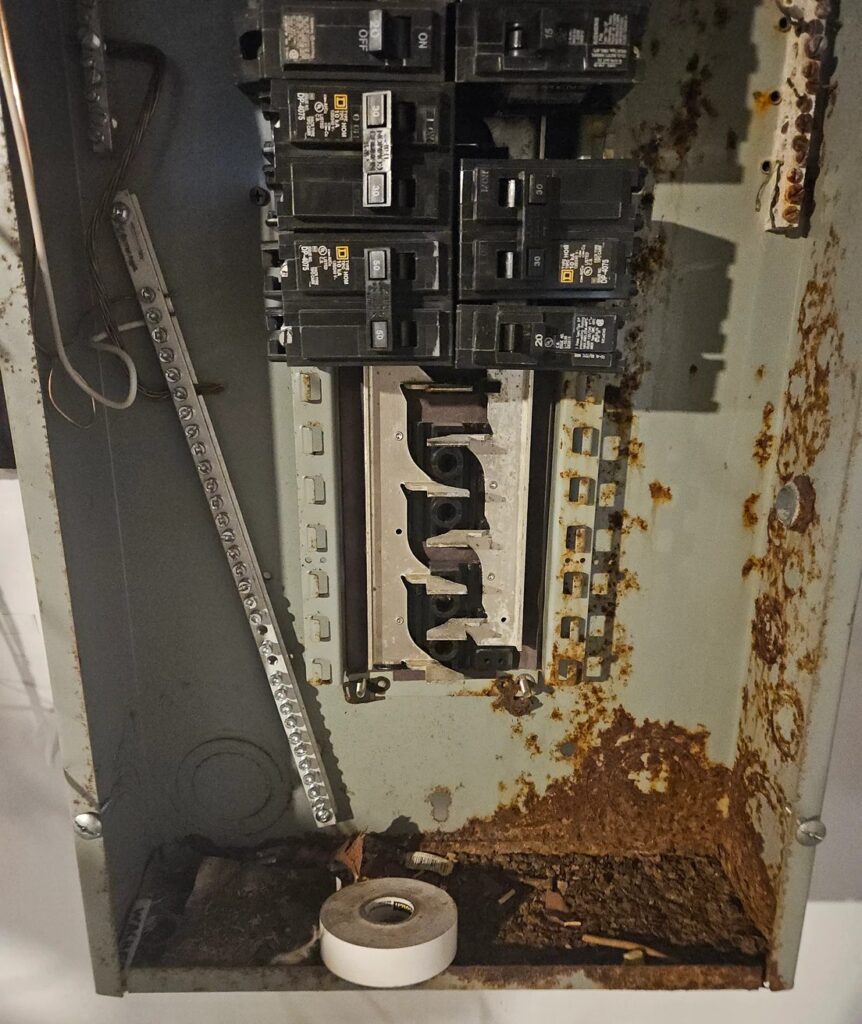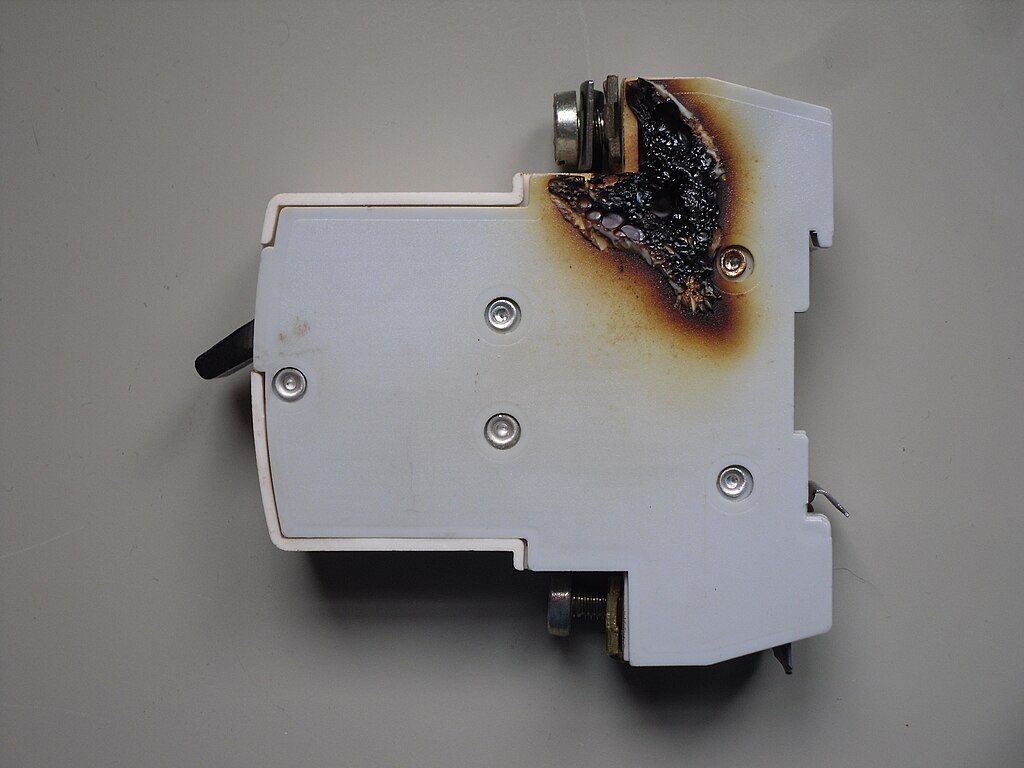
How to tell if a circuit breaker is bad is an essential trait for not only industrial experts but also every person to know for protecting his/her home and electrical appliances from fire hazard.
A circuit breaker is a very important equipment in domestic as well as industrial electrical practice, as it can provide protection to essential electrical equipment connected in the circuit from short circuits and overloading conditions, as it detects these faults. It protects the equipment from damage, fire hazards, and provides safety to human life.
A circuit breaker can go bad over time; the parts of the breaker can wear out as it involves motion, it can remain stuck in a position, and not trip during faults, thereby not performing or serving the purpose it was designed for.
Table of Contents
For the safety or protection of the circuit, knowing how to tell if a circuit breaker is bad is very important. If a circuit breaker is bad and is not replaced, it can cause a fire hazard during a short circuit or, overloaded condition.
Can a circuit breaker go bad?
A circuit breaker is designed to operate reliably in the long term, but just like other mechanical devices, with time, the parts of the breaker wear out or fail like any other equipment. If we don’t learn how to tell if a circuit breaker is bad, silent failure of circuit breaker will put entire circuit into risk.
Life Span: The service life of a circuit breaker is commonly not beyond 20 years under normal working conditions, and differs from manufacturer to manufacturer. However, frequent faults in the circuit cause frequent tripping, poor environment, and poor maintenance, as well, shortens the life cycle of the circuit breaker. Hence, it is important for everyone to learn how to tell if a circuit breaker is bad.
Causes of a circuit breaker failure
Mechanical failure: A circuit breaker consists of mechanical moving parts like springs, latches, etc. These parts are in motion during the operation of the circuit breaker, experiencing mechanical stress. Repeated operations due to frequent faults in the circuit cause fatigue, and over time, it causes the wearing out of various parts, the spring loses stiffness, causing misalignment. All this can cause the breaker to get stuck in some position, ceasing to work. It is a key sign while learning how to tell if a circuit breaker is bad.
Industrial or utility breakers usually have a mechanical endurance limit. Manufacturers give out the endurance limit as a certain number of operations for each breaker; exceeding the limit can cause safety and performance issues.
Overheating of circuit breakers: A circuit breaker can fail because of overheating. The overheating is caused by overcurrent. When the circuit breaker conducts more current than its rated capacity, it heats up. Repeated heating of the circuit breaker affects the insulation and causes damage to the contacts, which accelerates its aging. Overheating is among the clean sign while figuring out how to tell if a circuit breaker is bad.
Loose connection: If the terminal connections of the circuit breaker are loose, it will act as a resistance point for the current and under normal rated current, this point will also generate excessive heat. It will lead to arcing, melting of the terminal point, and a fire hazard. Checking of loose connection is also an step towards how to tell if a circuit breaker is bad.
Corrosion: Circuit breakers are designed to operate in a dry and clean environment. Exposure to excessive humid and corrosive atmospheres can lead to circuit breaker failure. Contacts of the circuit breaker and other metal parts, like the operating mechanism, can get oxidised with time. Since resistance increases due to corrosion, it causes overheating, leading to breaker failure. Also, because of corrosion electrical connection becomes poor and loose, which together causes unreliable tripping of the breaker and help us make out that the circuit breaker is bad.

Moisture ingress: Water and moisture ingress inside the breaker can potentially cause a short circuit and arcing, which can also cause insulation failure, which is detrimental to human safety as well as the equipment. A small amount of moisture can lead to performance and safety issues in the breaker. This makes it important to learn how to tell if a circuit breaker is bad in damp environment.
Poor installation: If the installation of the breaker is not proper, like not using proper mountings, less torque application on the screw, improper breaker selection for the type of circuit, it can result in arcing, overheating, and premature failure of the breaker. A good breaker can cause malfunctions if installed incorrectly. This is the seventh reason to know how to tell if a circuit breaker is bad.
Low-quality breakers: Circuit breakers with low quality and counterfeit substandard materials for contacts and trip mechanisms do fail under normal rated current, compromising the safety of the entire circuit equipment and humans as well.
Visual signs answering “how to tell if a circuit breaker is bad?”:
Burn Marks: When a circuit breaker is subjected to overheating and excessive arcing, it leaves behind burn marks on the casing, melted plastics, and terminal discoloration, which indicates internal damage. It can be made out from the burn marks that the breaker may or may not operate, which compromises the safety of the connected equipment.

Plastic smell: When a circuit breaker is subjected to overheating and excessive arcing, along with burn marks, it also gives out a burning plastic smell. This smell indicates that the internal components of the breaker are compromised and can lead to a fire hazard upon further operation.
Physical cracks: Physical cracks visible on the breaker housing or body suggest that the breaker is subjected to mechanical stress or physical impact. Such damage may prevent proper installation, and because of that, proper operation also cannot be expected. If the impact goes deep into the tripping mechanism, the breaker won’t operate. Also, from the cracks, moisture, and dust will seep in, causing a short circuit and risk of electrical hazard.
Behavioural signs for “how to tell if a circuit breaker is bad?”
Frequent tripping: When a circuit breaker trips without any faults or overloading conditions, under normal operating conditions, it implies that the breaker has aged and the insulation has broken down or is faulty. This can disrupt power and and repeated interruption can damage the devices connected to the circuit.
No reset and instant tripping: If the circuit breaker cannot be reset after tripping, and trips instantly upon being charged, it indicates an internal fault, like faults on the contacts of the breaker or internal tripping mechanism. This fault must not be ignored, or else it can result in an electrical hazard.
Loose switching: While switching ON/OFF, if the tactile feedback is not present or the switching feels loose or soft, it indicates a worn-out mechanical part of the breaker. This means the breaker has lost the ability to connect and disconnect the internal contacts properly. This condition will result in unreliable protection of the circuit.
Hot Breaker: If the circuit breaker is hot compared to other circuit breakers in the panel, it essentially indicates a loose connection or high contact resistance. If the same persists longer, it can result in a fatal accident because of insulation failure. This issue must be resolved immediately.
Indirect circuit symptoms suggesting “how to tell if a circuit breaker is bad?”
Flickering of lights: Sometimes light flickers even when the circuit breaker is on, the issue is not always the wiring but it is the circuit breaker’s loose terminal connection or the failing contacts which intermittently makes the circuit.
Equipment losing power: Sometimes it is also seen that the equipment connected to the circuit loses power and gains after some time while the circuit breaker is switched ON. This condition often stresses out the equipment, happens when aged breaker fails to maintain stable contact, therefore cutting supply at intervals.
Outlets making buzz: A bad breaker often cause overheating and arcing, this arcing is mostly passed down stream as a disturbance and is reflected as a faint buzzing sound in the outlets. This sound suggests irregular power flow and is often linked with bad circuit breaker.
This article is a part of the Switchgear, where other articles related to switchgear are discussed in details.
